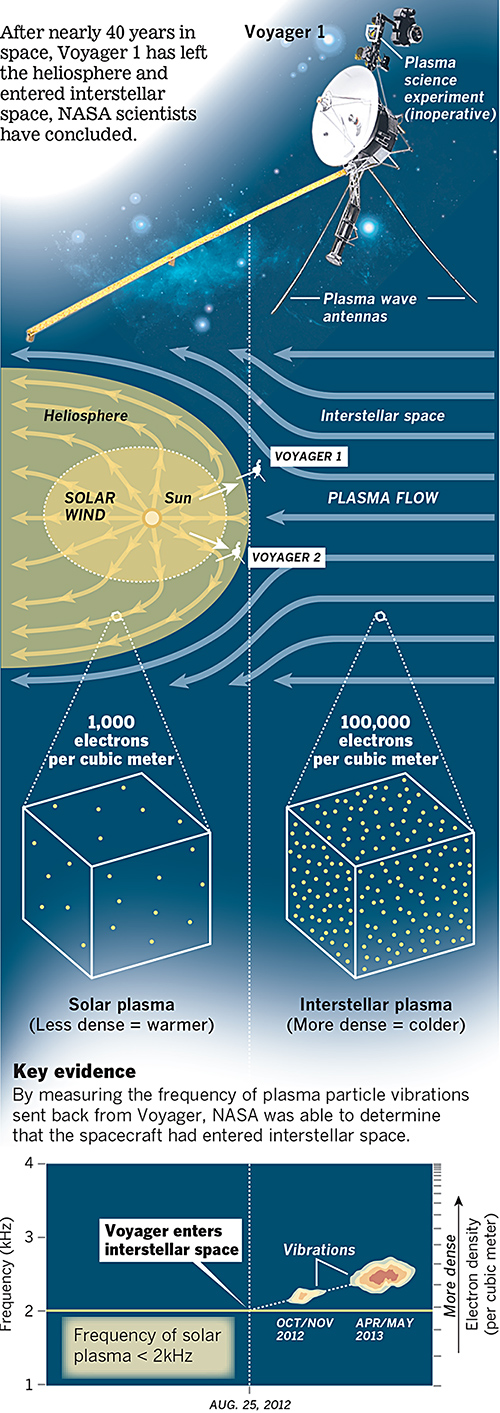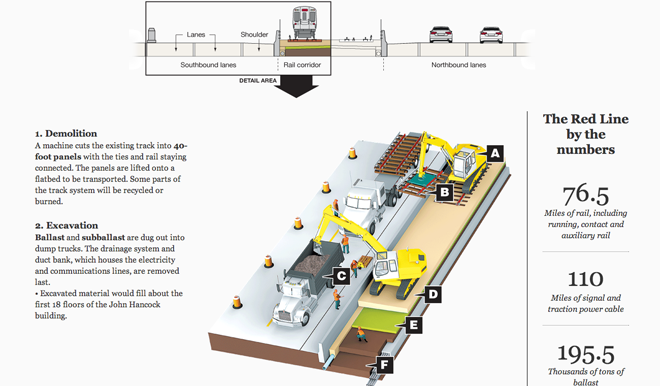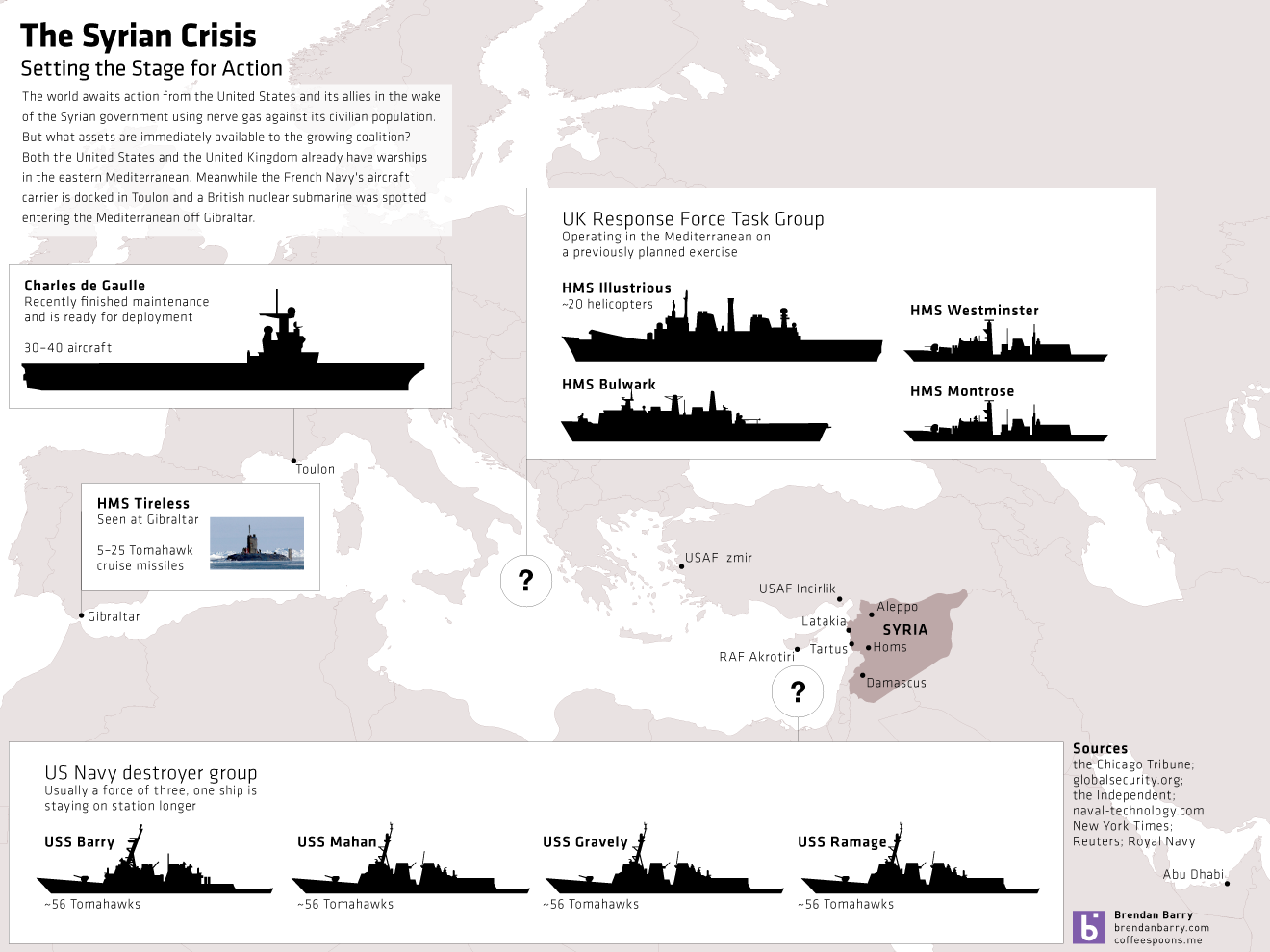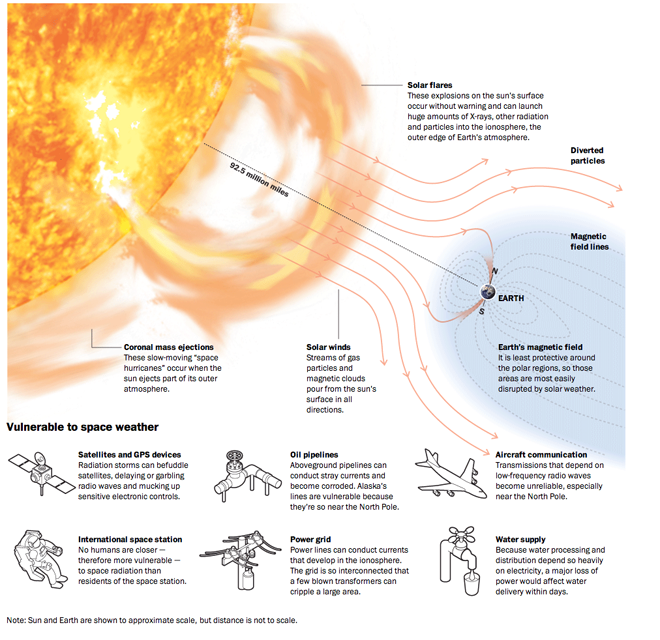While we are waiting for Russian help to destroy Syrian stockpiles of chemical weapons, we know that the Pentagon is still ready to strike (most likely with cruise missiles) various targets of the Syrian regime. This graphic from the Wall Street Journal explores some of the options. The interesting bit is the range of Syria’s anti-ship missiles. Because for those of you who do not recall the Israel–Lebanon war of 2006, Hezbollah (known to be aiding the Syrian regime) surprised some by scoring a hit on an Israeli warship with a less-advanced missile than in the Syrian arsenal.

This is only one of several different graphics from that page. Different graphics look at elements of the conflict, including the refugees, timeline of the regime’s actions, &c.
Credit for the piece goes to the Wall Street Journal graphics department.









